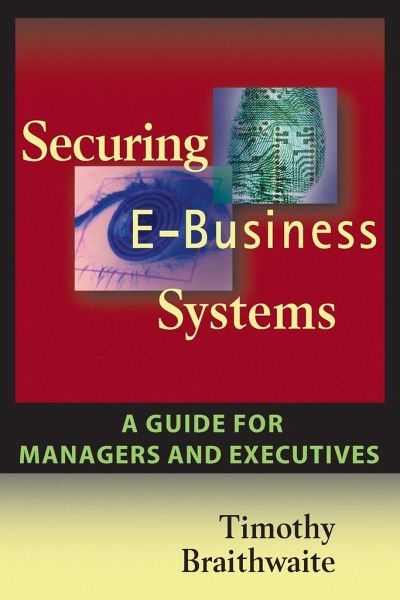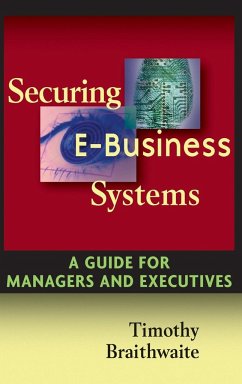
Securing E-Business Systems: A Guide for Managers and Executives

PAYBACK Punkte
17 °P sammeln!
>--John R. Thomas, Colonel, U.S. Army, Retired Former Commander of the DoD, Global Operations and Security Center Today's e-business depends on the security of its networks and information technology infrastructure to safeguard its customers and its profits. But with rapid innovation and the emergence of new threats and new countermeasures, keeping up with security is becoming more complex than ever. Securing E-Business Systems offers a new model for developing a proactive program of security administration that works as a continuous process of identifying weaknesses and implementing solutions...
>--John R. Thomas, Colonel, U.S. Army, Retired Former Commander of the DoD, Global Operations and Security Center Today's e-business depends on the security of its networks and information technology infrastructure to safeguard its customers and its profits. But with rapid innovation and the emergence of new threats and new countermeasures, keeping up with security is becoming more complex than ever. Securing E-Business Systems offers a new model for developing a proactive program of security administration that works as a continuous process of identifying weaknesses and implementing solutions. This book offers a real, working design for managing an IT security program with the attention it truly warrants, treating security as a constant function that adapts tomeet a company's changing security needs. Topics include: * Security weaknesses * Safeguarding technologies * Countermeasure best practices * Establishing an adaptable e-business security management program * Essential elements of a corporate security management program * Functions, structure, staffing, and contracting considerations in security management * Implementing intrusion detection technology * Designing tomorrow's e-business application for secured operations * Contemporary rationales for justifying increased spending on security programs * Emerging liability issues for e-businesses














